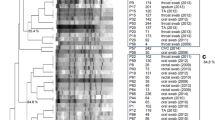Abstract
The microorganisms capable of producing opportunist infections include the yeast-like organisms of the genus Candida, and the unicellular algae of the genus Prototheca, which share common features and can, therefore, lead to confusion. Their colonies are almost identical and they grow in the same culture media used routinely in mycology.
CHROMagar Candida is a new chromogenic differential isolation medium that facilitates the presumptive differentiation of some of the most clinically important yeast-like organisms. To our knowledge, the use of CHROMagar Candida with Prototheca spp. has not been reported in the literature.
This report describes the growth of 151 strains of Prototheca on CHROMagar Candida compared to the growth of a total of 326 well-characterized yeast organisms of the genera Candida, Cryptococcus, Trichosporon, Geotrichum, and Saccharomyces.
It is clinically relevant to note that algae of the genus Prototheca (P. wickerhamii, P. zopfii, and P. stagnora) and of the genus Candida parapsilosis produced similar cream-colored colonies on CHROMagar Candida medium.
Based on their growth on CHROMagar, a new species of Candida is described, C. zeylanoides, which has blue-green colonies. The colonies of two species of Trichosporon are also differentiated: the blue-green colonies of T. beigelii and the pink colonies of T. capitatum.
Similar content being viewed by others
Author information
Authors and Affiliations
Rights and permissions
About this article
Cite this article
Casal, M., Linares, M.J., Solís, F. et al. Appearance of Colonies of Prototheca on CHROMagar Candida medium. Mycopathologia 137, 79–82 (1997). https://doi.org/10.1023/A:1006818606851
Issue Date:
DOI: https://doi.org/10.1023/A:1006818606851




